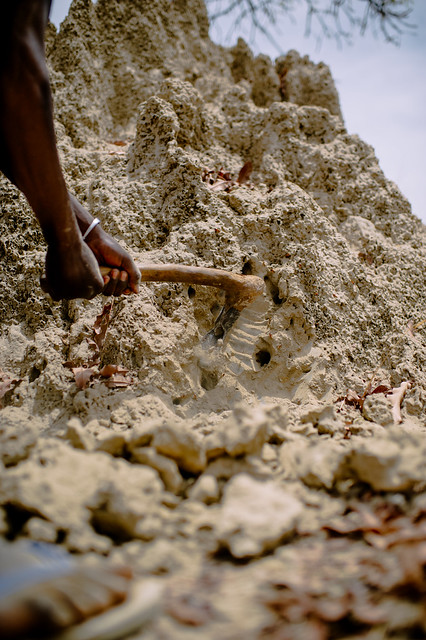Sougué Zama harvests termites that will be used to feed poultry. The technique of extracting termites is first dig into the side of a termite mound. Leaves are then packed into the hole, and when they are removed a few hours later they are covered with termites. Sougué Zama said, "If we do not use the leaves it is impossible to catch termites because of the extensive underground galleries.” Bitiago village near Boromo, Burkina Faso.
Photo by Ollivier Girard for Center for International Forestry Research (CIFOR).
cifor.org
blog.cifor.org
If you use one of our photos, please credit it accordingly and let us know. You can reach us through our Flickr account or at: cifor-mediainfo@cgiar.org and m.edliadi@cgiar.org
Keywords:
Boromo, dry forests, game animals, food supply, dig, livelihoods, income, CIFOR, poverty alleviation, nontimber forest products, horizontal, leaves, household expenditure, ecosystem services, Bitiago Village, food preference, animal protein, Africa, food availability, food policy, Burkina Faso, food security, climate change, Termite, household income, animal, creature, creatures, zoology, Animals.




























